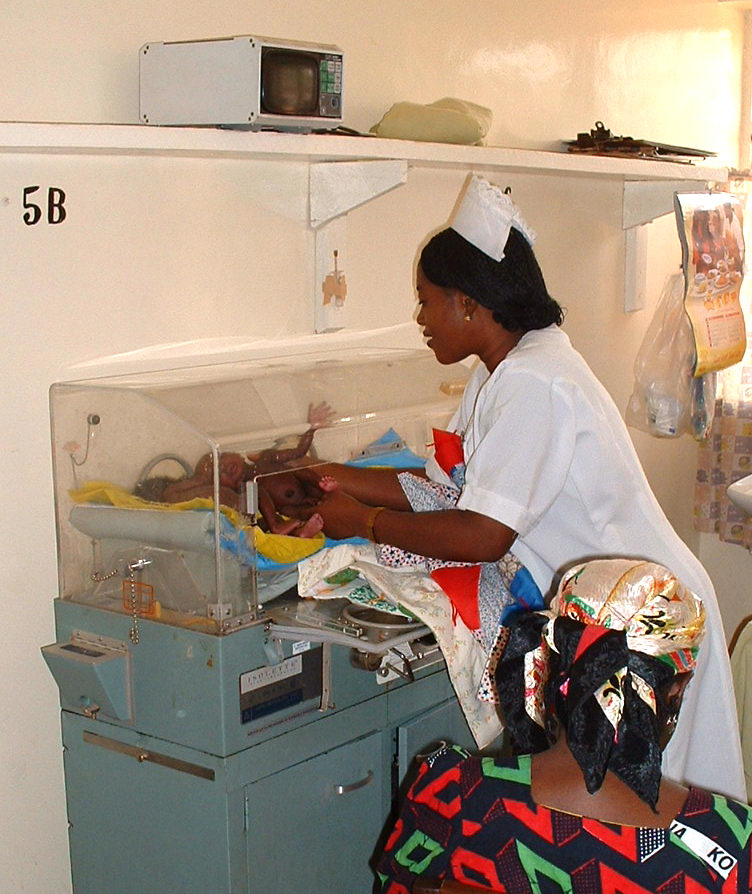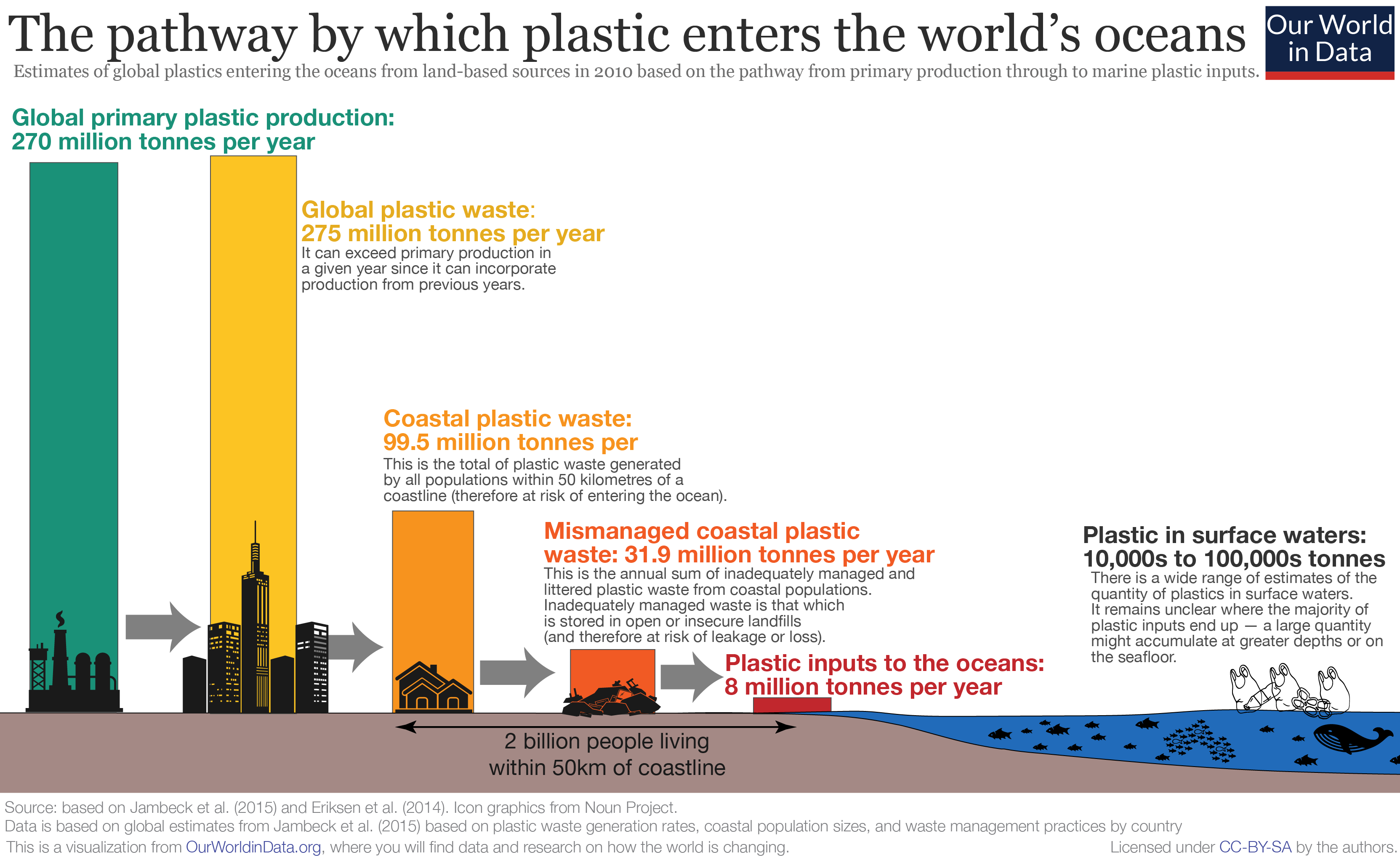|
Clingfilm
Plastic wrap, cling film, Saran wrap, cling wrap, Glad wrap or food wrap is a thin plastic film typically used for sealing food items in containers to keep them fresh over a longer period of time. Plastic wrap, typically sold on rolls in boxes with a cutting edge, clings to many smooth surfaces and can thus remain tight over the opening of a container without adhesive. Common plastic wrap is roughly 0.0005 inches (12.7 μm) thick. The trend has been to produce thinner plastic wrap, particularly for household use (where very little stretch is needed), so now the majority of brands on shelves around the world are 8, 9 or 10 μm thick. Materials used Plastic wrap was initially created from polyvinyl chloride (PVC), which remains the most common component globally. PVC has an acceptably-low permeability to water vapor and oxygen, helping to preserve the freshness of food. There are concerns about the transfer of plasticizers from PVC into food. Pliofilm was made of various kinds of ... [...More Info...] [...Related Items...] OR: [Wikipedia] [Google] [Baidu] |
Plasticizer
A plasticizer ( UK: plasticiser) is a substance that is added to a material to make it softer and more flexible, to increase its plasticity, to decrease its viscosity, and/or to decrease friction during its handling in manufacture. Plasticizers are commonly added to polymers and plastics such as PVC, either to facilitate the handling of the raw material during fabrication, or to meet the demands of the end product's application. Plasticizers are especially key to the usability of polyvinyl chloride (PVC), the third most widely used plastic. In the absence of plasticizers, PVC is hard and brittle; with plasticizers, it is suitable for products such as vinyl siding, roofing, vinyl flooring, rain gutters, plumbing, and electric wire insulation/coating. Plasticizers are also often added to concrete formulations to make them more workable and fluid for pouring, thus allowing the water contents to be reduced. Similarly, they are often added to clays, stucco, solid rocket fuel, ... [...More Info...] [...Related Items...] OR: [Wikipedia] [Google] [Baidu] |
Burn
A burn is an injury to skin, or other tissues, caused by heat, electricity, chemicals, friction, or ionizing radiation (such as sunburn, caused by ultraviolet radiation). Most burns are due to heat from hot fluids (called scalding), solids, or fire. Burns occur mainly in the home or the workplace. In the home, risks are associated with domestic kitchens, including stoves, flames, and hot liquids. In the workplace, risks are associated with fire and chemical and electric burns. Alcoholism and smoking are other risk factors. Burns can also occur as a result of self-harm or violence between people (assault). Burns that affect only the superficial skin layers are known as superficial or first-degree burns. They appear red without blisters, and pain typically lasts around three days. When the injury extends into some of the underlying skin layer, it is a partial-thickness or second-degree burn. Blisters are frequently present and they are often very painful. Healing can re ... [...More Info...] [...Related Items...] OR: [Wikipedia] [Google] [Baidu] |
First Aid
First aid is the first and immediate assistance given to any person with a medical emergency, with care provided to preserve life, prevent the condition from worsening, or to promote recovery until medical services arrive. First aid is generally performed by someone with basic medical or first response training. Mental health first aid is an extension of the concept of first aid to cover mental health, while psychological first aid is used as early treatment of people who are at risk for developing Post-traumatic stress disorder, PTSD. Conflict first aid, focused on preservation and recovery of an individual's social or relationship well-being, is being piloted in Canada. There are many situations that may require first aid, and many countries have legislation, regulation, or guidance, which specifies a minimum level of first aid provision in certain circumstances. This can include specific training or equipment to be available in the workplace (such as an Automated External ... [...More Info...] [...Related Items...] OR: [Wikipedia] [Google] [Baidu] |
Neonatal Intensive Care Unit
A neonatal intensive care unit (NICU), also known as an intensive care nursery (ICN), is an intensive care unit (ICU) specializing in the care of ill or premature newborn infants. The NICU is divided into several areas, including a critical care area for babies who require close monitoring and intervention, an intermediate care area for infants who are stable but still require specialized care, and a step down unit where babies who are ready to leave the hospital can receive additional care before being discharged. Neonatal refers to the first 28 days of life. Neonatal care, as known as specialized nurseries or intensive care, has been around since the 1960s. The first American newborn intensive care unit, designed by Louis Gluck, was opened in October 1960 at Yale New Haven Hospital. An NICU is typically directed by one or more neonatologists and staffed by resident physicians, nurses, nurse practitioners, pharmacists, physician assistants, respiratory therapists, and ... [...More Info...] [...Related Items...] OR: [Wikipedia] [Google] [Baidu] |
Hypothermia
Hypothermia is defined as a body core temperature below in humans. Symptoms depend on the temperature. In mild hypothermia, there is shivering and mental confusion. In moderate hypothermia, shivering stops and confusion increases. In severe hypothermia, there may be hallucinations and paradoxical undressing, in which a person removes their clothing, as well as an increased risk of the heart stopping. Hypothermia has two main types of causes. It classically occurs from exposure to cold weather and cold water immersion. It may also occur from any condition that decreases heat production or increases heat loss. Commonly, this includes alcohol intoxication but may also include low blood sugar, anorexia and advanced age. Body temperature is usually maintained near a constant level of through thermoregulation. Efforts to increase body temperature involve shivering, increased voluntary activity, and putting on warmer clothing. Hypothermia may be diagnosed based on either a ... [...More Info...] [...Related Items...] OR: [Wikipedia] [Google] [Baidu] |
Premature Babies
Preterm birth, also known as premature birth, is the birth of a baby at fewer than 37 weeks gestational age, as opposed to full-term delivery at approximately 40 weeks. Extreme preterm is less than 28 weeks, very early preterm birth is between 28 and 32 weeks, early preterm birth occurs between 32 and 34 weeks, late preterm birth is between 34 and 36 weeks' gestation. These babies are also known as premature babies or colloquially preemies (American English) or premmies (Australian English). Symptoms of preterm labor include uterine contractions which occur more often than every ten minutes and/or the leaking of fluid from the vagina before 37 weeks. Premature infants are at greater risk for cerebral palsy, delays in development, hearing problems and problems with their vision. The earlier a baby is born, the greater these risks will be. The cause of spontaneous preterm birth is often not known. Risk factors include diabetes, high blood pressure, multiple gestation (being ... [...More Info...] [...Related Items...] OR: [Wikipedia] [Google] [Baidu] |
Plastic Pollution
Plastic pollution is the accumulation of plastic objects and particles (e.g. plastic bottles, bags and microbeads) in the Earth's environment that adversely affects humans, wildlife and their habitat. Plastics that act as pollutants are categorized by size into micro-, meso-, or macro debris. Plastics are inexpensive and durable, making them very adaptable for different uses; as a result, manufacturers choose to use plastic over other materials. However, the chemical structure of most plastics renders them resistant to many natural processes of environmental degradation, degradation and as a result they are slow to degrade. Together, these two factors allow large volumes of plastic to enter the environment as mismanaged waste which persists in the ecosystem and travels throughout food webs. Plastic pollution can afflict land, waterways and oceans. It is estimated that 1.1 to 8.8'' ''million tonnes of plastic waste enters the ocean from coastal communities each year. It is ... [...More Info...] [...Related Items...] OR: [Wikipedia] [Google] [Baidu] |
Diethylhexyl Adipate
Bis(2-ethylhexyl) adipate or DEHA or DOA is an organic compound with the formula (CH2CH2CO2C8H17)2. It is the diester of 2-ethylhexanol and adipic acid. It is a colorless oily liquid. DEHA is sometimes called "dioctyl adipate", incorrectly. Another name is di(2-ethylhexyl) adipate. The abbreviation DOA has been used for both bis(-2-ethylhexyl)-adipate and dioctyl adipate Use As well as related diesters derived from octanol, decanol, isodecanol, etc., it is used as a plasticizer. DEHA is used as a hydraulic fluid, and a component of aircraft lubricants. It is sometimes also used as an ingredient in PVC-based plastic wrap. Toxicity DEHA has very low toxicity. The LD50 is estimated at 900 mg/kg (rat, i.v.). According to the International Agency for Research on Cancer (IARC), it is "not classifiable as to its carcinogenicity A carcinogen () is any agent that promotes the development of cancer. Carcinogens can include synthetic chemicals, naturally occurring substances, ... [...More Info...] [...Related Items...] OR: [Wikipedia] [Google] [Baidu] |
Center For Food Safety And Applied Nutrition
The Center for Food Safety and Applied Nutrition (CFSAN ( )) is the branch of the United States Food and Drug Administration (FDA) that regulates food, dietary supplements, and cosmetics, as opposed to drugs, biologics, medical devices, and radiological products, which also fall under the purview of the FDA. Area of regulation "Food" within the context of FDA is a very broad term with some limitations. Products that contain meat are regulated by the U.S. Department of Agriculture's Food Safety and Inspection Service, with the exception of seafood and some exotic meats. The regulation of eggs is similarly complicated by shared responsibilities between the two agencies. Many other federal and state agencies have some overlapping or conflicting requirements for regulation of food products. For example, the United States Environmental Protection Agency (EPA) regulates levels of allowable contaminants in public drinking water, where the FDA regulates bottled water. Regulation o ... [...More Info...] [...Related Items...] OR: [Wikipedia] [Google] [Baidu] |
Food And Drug Administration
The United States Food and Drug Administration (FDA or US FDA) is a List of United States federal agencies, federal agency of the United States Department of Health and Human Services, Department of Health and Human Services. The FDA is responsible for protecting and promoting public health through the control and supervision of food safety, tobacco products, caffeine products, dietary supplements, Prescription drug, prescription and Over-the-counter drug, over-the-counter pharmaceutical drugs (medications), vaccines, biopharmaceuticals, blood transfusions, medical devices, electromagnetic radiation emitting devices (ERED), cosmetics, Animal feed, animal foods & feed and Veterinary medicine, veterinary products. The FDA's primary focus is enforcement of the Federal Food, Drug, and Cosmetic Act (FD&C). However, the agency also enforces other laws, notably Section 361 of the Public Health Service Act as well as associated regulations. Much of this regulatory-enforcement work is ... [...More Info...] [...Related Items...] OR: [Wikipedia] [Google] [Baidu] |
Varnish
Varnish is a clear Transparency (optics), transparent hard protective coating or film. It is not to be confused with wood stain. It usually has a yellowish shade due to the manufacturing process and materials used, but it may also be pigmented as desired. It is sold commercially in various shades. Varnish is primarily used as a wood finishing, wood finish where, stained or not, the distinctive tones and grains in the wood are intended to be visible. Varnish finishes are naturally Gloss (material appearance), glossy, but satin/semi-gloss and flat sheens are available. History The word "varnish" comes from Mediaeval Latin ''vernix'', meaning odorous resin, perhaps derived from Middle Greek ''berōnikón'' or ''beroníkē'', meaning amber or amber-colored glass. A false etymology traces the word to the Greek ''Berenice'', the ancient name of modern Benghazi in Libya, where the first varnishes in the Mediterranean area were supposedly used and where resins from the trees of now-v ... [...More Info...] [...Related Items...] OR: [Wikipedia] [Google] [Baidu] |







